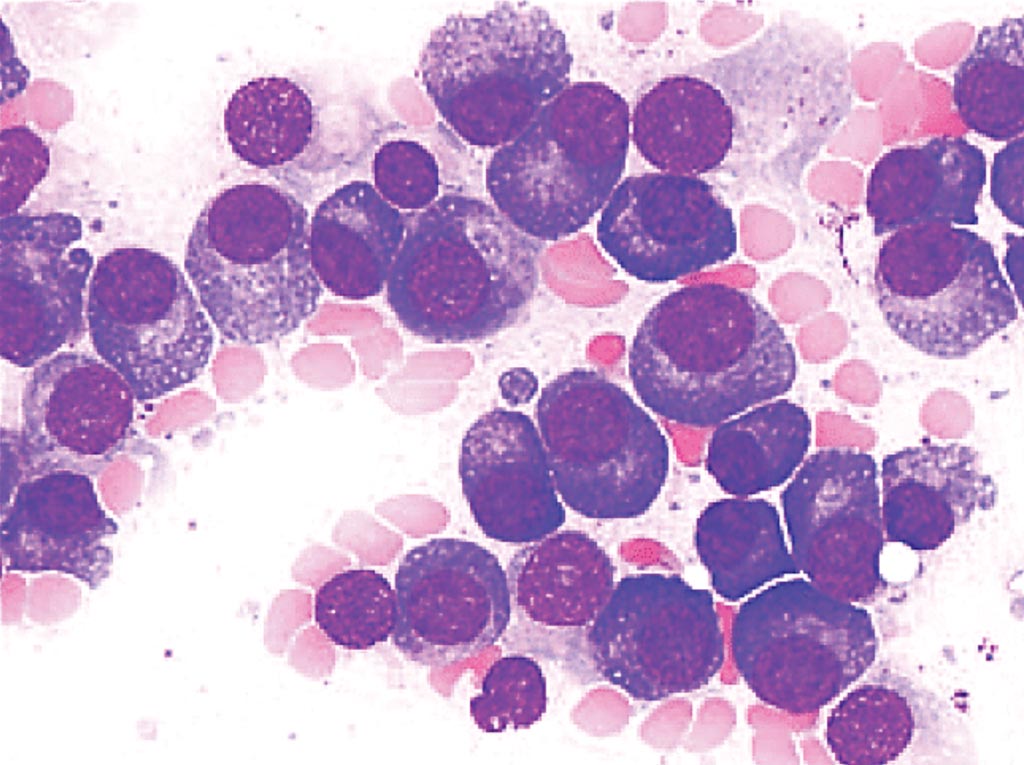RNA Defects Linked to Multiple Myeloma Progression
By LabMedica International staff writers
Posted on 14 Nov 2018
Multiple myeloma (MM) is the second most common type of blood cancer where cancer cells accumulate in the bone marrow, crowding out healthy blood cells. Studies on MM development have traditionally focused mostly on DNA abnormalities.Posted on 14 Nov 2018
Survival rates for MM patients have significantly improved over the years with multiple new drug discoveries for the disease. However, about 10% to 15% continue to be classified as high risk patients with low survival rates even when treated with the available drugs, as they develop resistance to the drug treatments.

Image: Bone marrow aspirate from a patient with multiple myeloma showing plasmacytosis (Photo courtesy of Feinberg School of Medicine).
Scientists at the National University of Singapore (Singapore) have uncovered an association between RNA abnormalities and multiple myeloma progression. The findings offer novel insights for new, effective therapeutic strategies to be developed. The team discovered that overexpression of double-stranded RNA-specific adenosine deaminase (ADAR1), a RNA-editing enzyme, and a modified gene caused by irregular RNA editing are key to MM progression and the development of resistance to current treatments.
The team's analysis revealed that that the MM RNA exists in an abnormally modified state, which consequently promotes MM progression in two ways. The first is an abnormally elevated level of ADAR1 expression in myeloma cancer cells. This overexpression of ADAR1 causes myeloma cancer cells to acquire stronger cancer properties. The second is the irregular RNA editing of Nei Like DNA Glycosylase 1 (NEIL1), a gene associated with lung carcinoma and colorectal cancer. NEIL1-edited myeloma cancer cells demonstrate a more cancerous nature where they lose the ability to repair DNA damage and show increased resistance to a standard MM drug. Collectively, patients with high ADAR1 expression and compromised NEIL1 function were found to be less responsive towards the available treatments for MM.
Chng Wee Joo, MB ChB, PhD, FRCP, FRCPath, FAMS, a professor and the Senior Principal Investigator, said, “Our study has shown that RNA defects is both clinically and biologically relevant in MM, and by exploring these RNA abnormalities further, we may unravel more novel insights on MM molecular pathogenesis. Each piece of new knowledge derived will be key in helping to complete the puzzle of MM biology, paving the way for the development of innovative therapies that can curb drug resistance and raise the survival rates of high risk MM patients.” The study was originally published on September 20, 2018, in the journal Blood.
Related Links:
National University of Singapore













